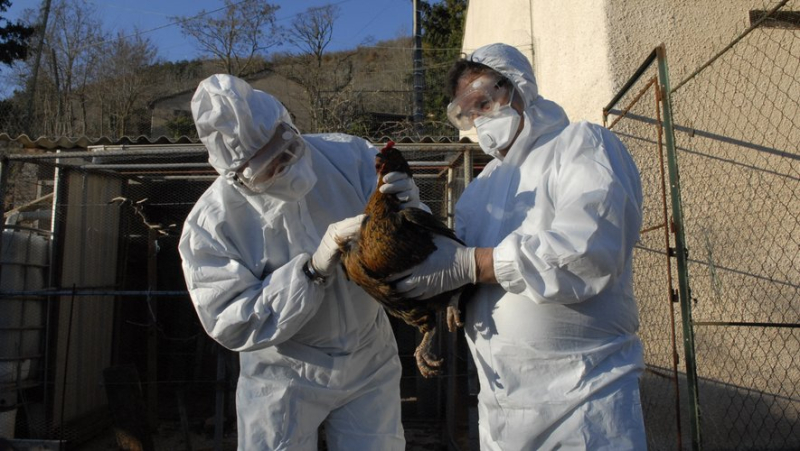H5N1, new coronavirus, disease X… “there will be a new pandemic and it will be respiratory”, warns Covars

Surveillance d’un élevage pour suspicion de grippe aviaire, en Occitanie. Midi Libre – SYLVIE CAMBON
Successor to the scientific council mobilized during the Covid crisis, Covars, requested by the government, has just issued an opinion on the risk of the next pandemic in the short term, within two to five years. The most likely: transmission to humans of the avian flu virus, H5N1.
Thirty-five diseases screened, sixteen selection criteria, around fifty documents relating to infectious and environmental risks analyzed according to a "rigorous methodology"… in an opinion sent on April 3 to the "national authorities", and made public this Wednesday, April 10, the Committee monitoring and anticipation of health risks (Covars), successor to the scientific council mobilized during the Covid crisis, evaluates "the risks of major exceptional health situations for human health in France during the years 2025-2030″.
Seized by the Ministries of Health and Higher Education and Research, the twenty members of Covars, including Montpellier residents Thierry Lefrançois, veterinarian, from CIRAD, and mosquito specialist Didier Fontenille, from the IRD, conclude that the next pandemic will probably be "respiratory".
"The major risk is linked to the H5N1 avian flu virus. This is a significant risk, clearly identified", explains virologist Bruno Lina. The possibility of a "new coronavirus", then "arboviruses" (transmitted by mosquitoes, such as dengue and West-Nile virus infection) follow in the risk scale. Because Thierry Lefrançois reminds us: "75% of emerging infectious diseases in humans have an animal origin.
The immunologist Brigitte Autran finally raises the possibility of a "acute winter respiratory infection" or even a "disease X, for which we do not know an infectious agent". Three "vector-borne diseases including two arboviruses, Zika and Chikungunya, and Crimean-Congo hemorrhagic fever as well as multi-drug resistant bacterial infections" are, according to the opinion of Covars, "a level close to risk, but lower".
"We are not alarmists, the risks exist. We don't know when these phenomena will happen but they will happen, explains the president of Covars.
"Environmental risks aggravate, accelerate or exacerbate the occurrence of exceptional health situations"
The risk analysis was established at the scale of the French territory, "taking into account the aging of the population, the& rsquo;inequality of territories, the state of mental health of our country and the infodemic", a mixture of verified information and " ;fake news", specifies Brigitte Autran.
Covars also refers to the upheavals brought about by climate change and environmental pollution: "Environmental risks aggravate, accelerate or exacerbate the occurrence of other exceptional health situations", alerts Thierry Lefrançois, co-pilot of the advisory, who works on the "One Health" concept, only one health, which combines animal health and human health.
Based on this collective expertise work, Covars has issued recommendations for "preparation, prevention and anticipation" of risk. In terms of research, but also preparation of the population and adaptation of current systems.




